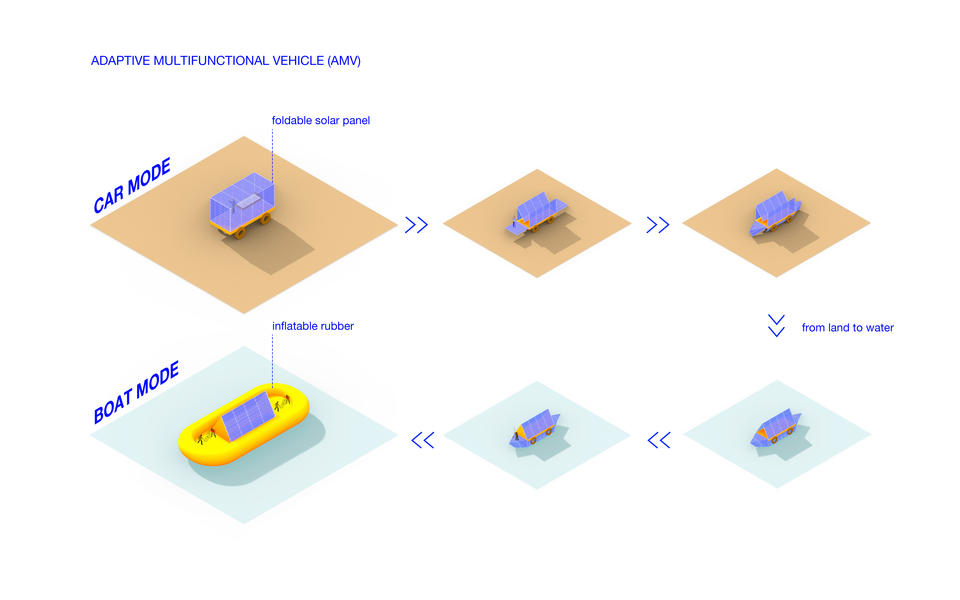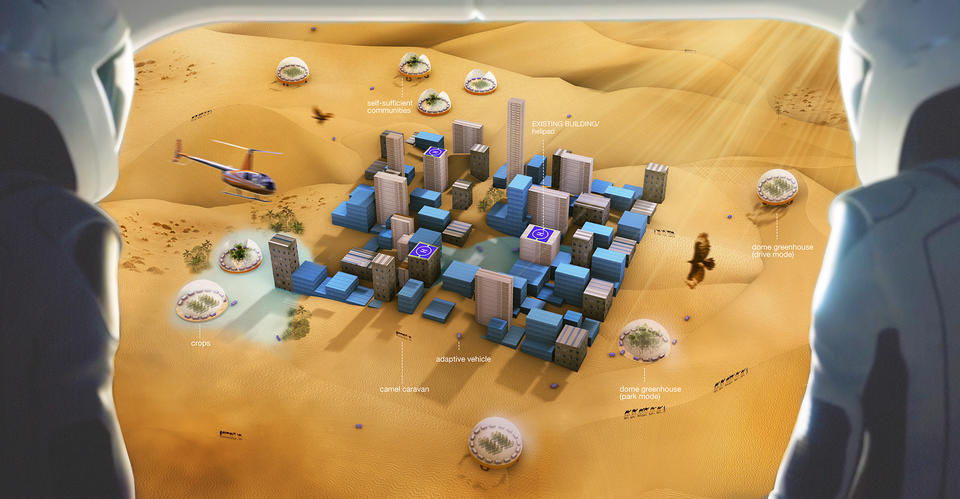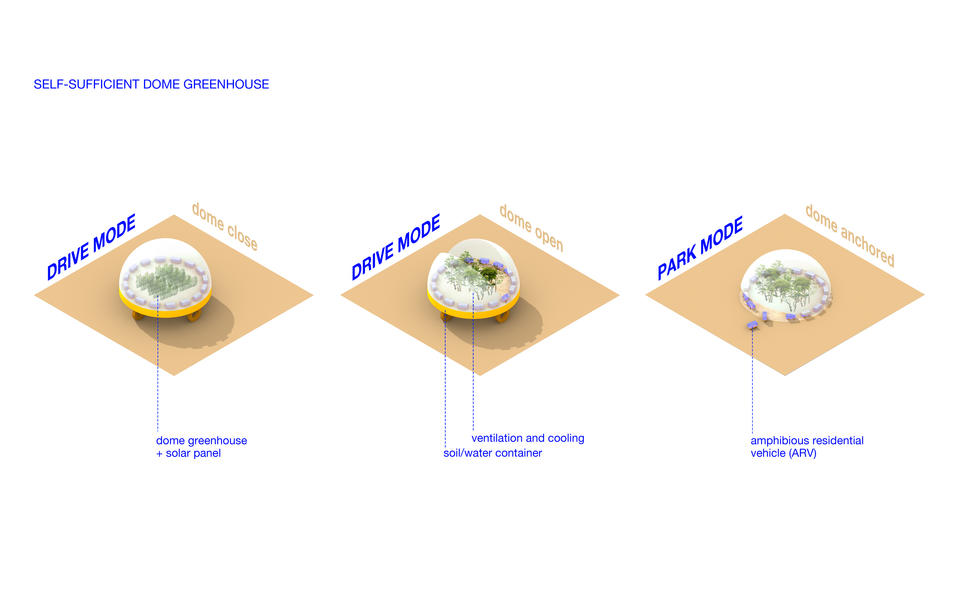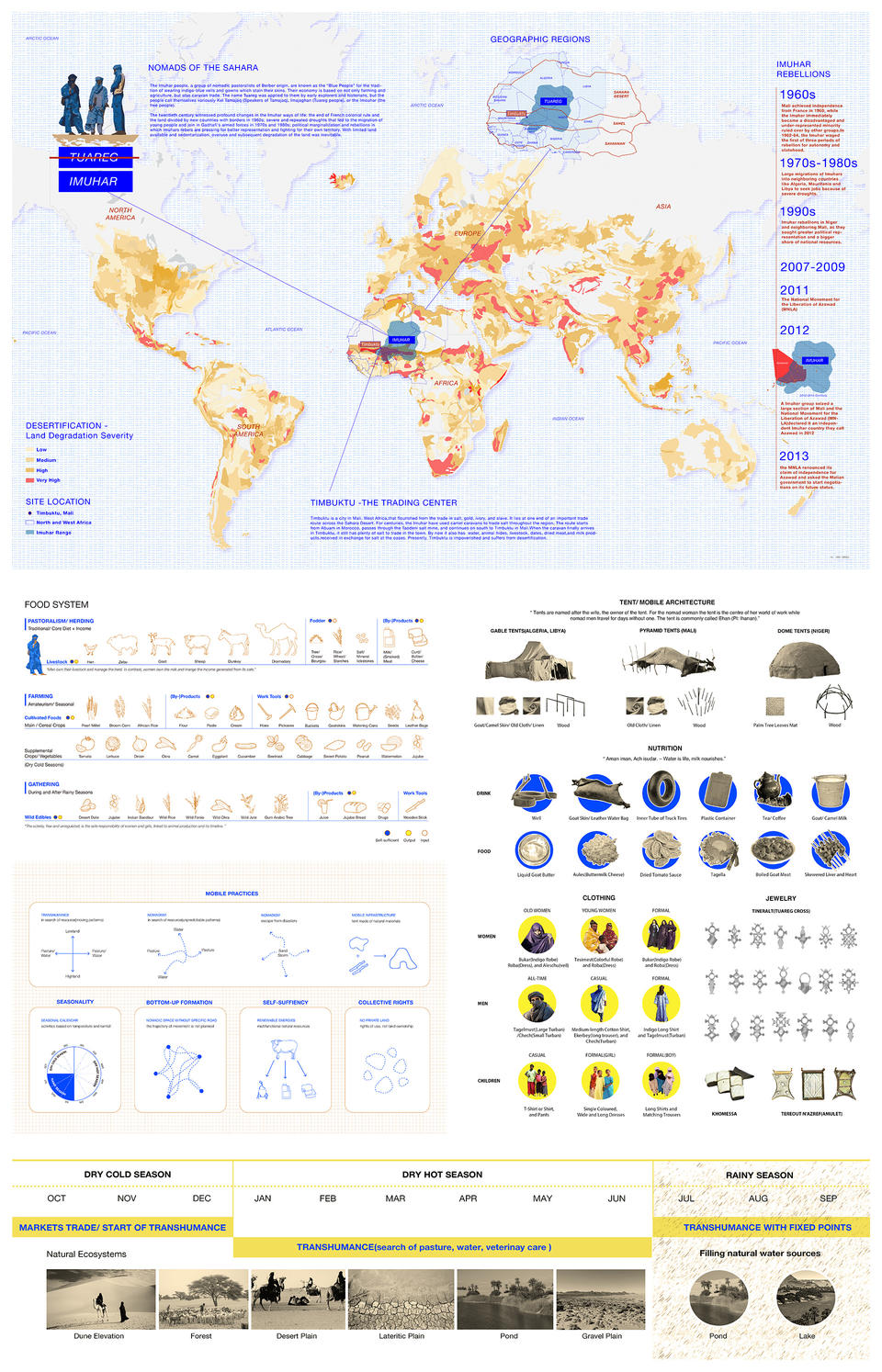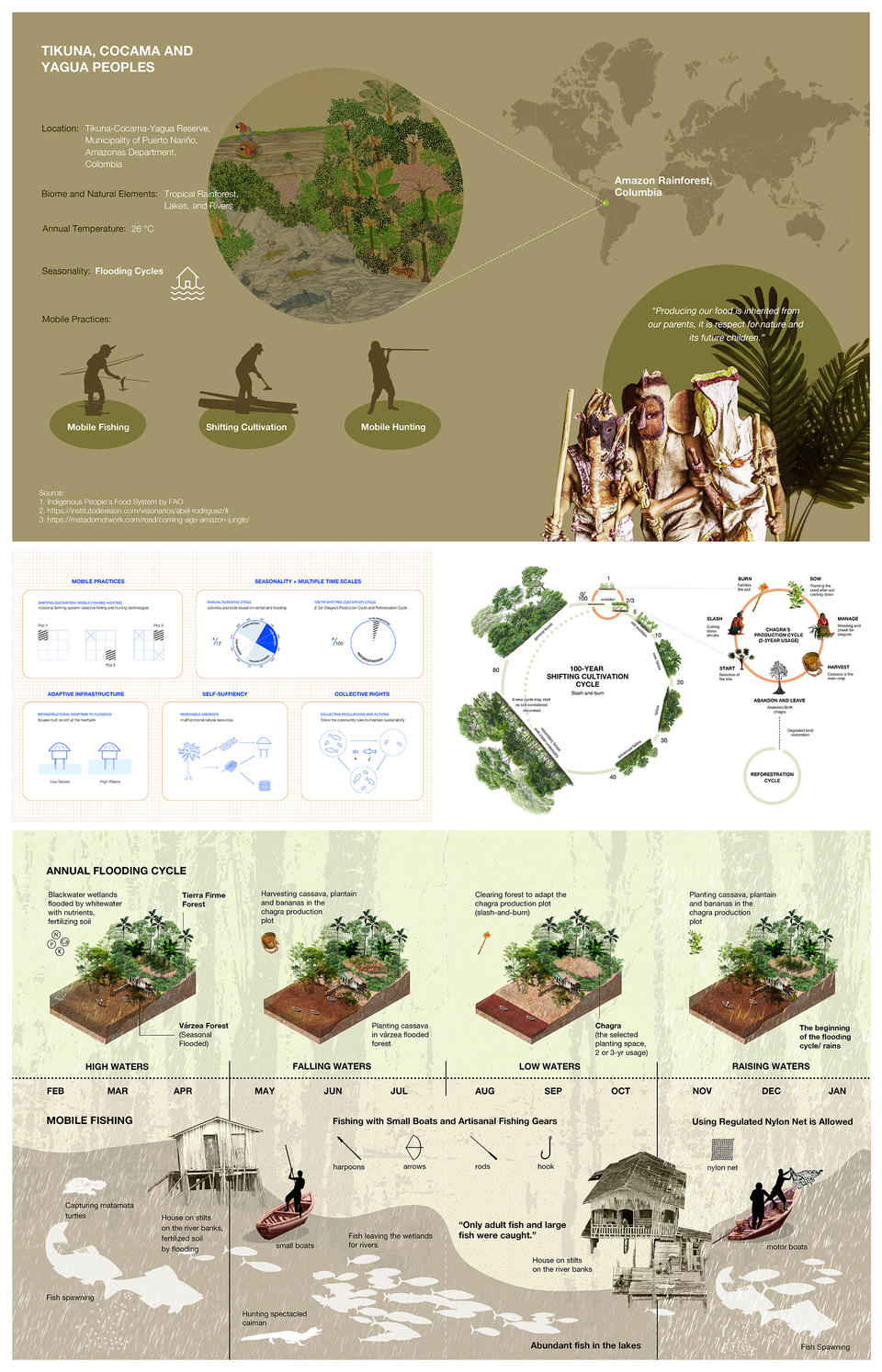Ruoyuan Chen
X-Era: Adaptation to the Future Uncertainty with Sustainable Indigenous Wisdom
Due to human impacts on earth’s geology and ecosystem, the future of this planet and our society is uncertain. To navigate this uncertainty, it is urgent that we understand and explore new strategies to adapt to this unknown future. Over the millennia, indigenous communities around the world have developed advanced and nuanced ways to adapt to living in harsh environments. X is commonly used in science to refer to a variable that can change or be changed. Therefore, the thesis project – “X-Era” aims to learn from the sustainability of traditional ecological knowledge to help inform how we may adapt to the possible extreme weather, harsh environments, and unknowns of the future.
Image
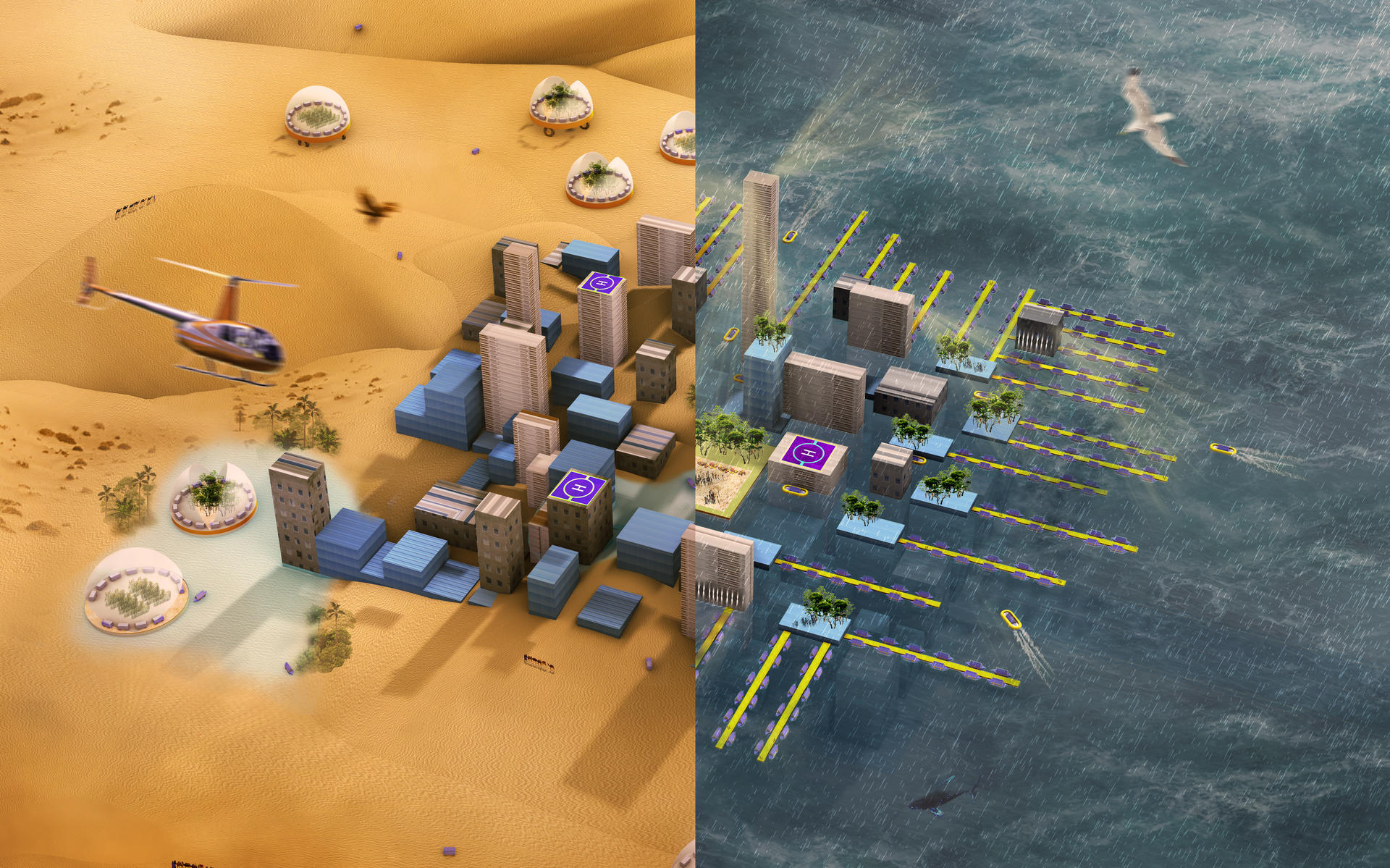
Learning from indigenous peoples living in extremely arid and wet areas: the Imuhar in the Sahara Desert, and Tikuna, Cocama, and Yagua in the Amazon Rainforest, this thesis speculates an adaptive possibility for the upcoming X-Era to respond to flood and drought conditions.
Evolution of Human Societies to “X-Era”
Six centuries ago, according to Ibn Khaldoun, an Arab thinker, history is a cycle: a dynasty typically lasts three generations before decadence sets in. However, unlike the social cycle theories that argue that events and stages of society and history generally repeat themselves in cycles, social evolutionism describes the changes of societies from the ancestral form as moving forward into new directions. In terms of the primary means of subsistence, it is commonly believed that there are six phases in the evolution of human societies: hunter-gatherer, pastoral, horticultural, agrarian, industrial, and post-industrial. As technology develops and the population rises, the surplus increases and mobility decreases in each phase. People started to centralize in the industrialized cities and become sedentary and individualistic, causing many environmental, social, and political issues which accelerate global climate change.
Due to human impact on Earth's geology and ecosystem, the future of this planet and our society is uncertain. X is the variable commonly used in mathematics. Therefore, this thesis defines the next society as “X-ERA” for the increasing turbulence driven by the intertwined dynamics of people and the planet. We are still exploring the best lifestyle for the incoming situations.
Image
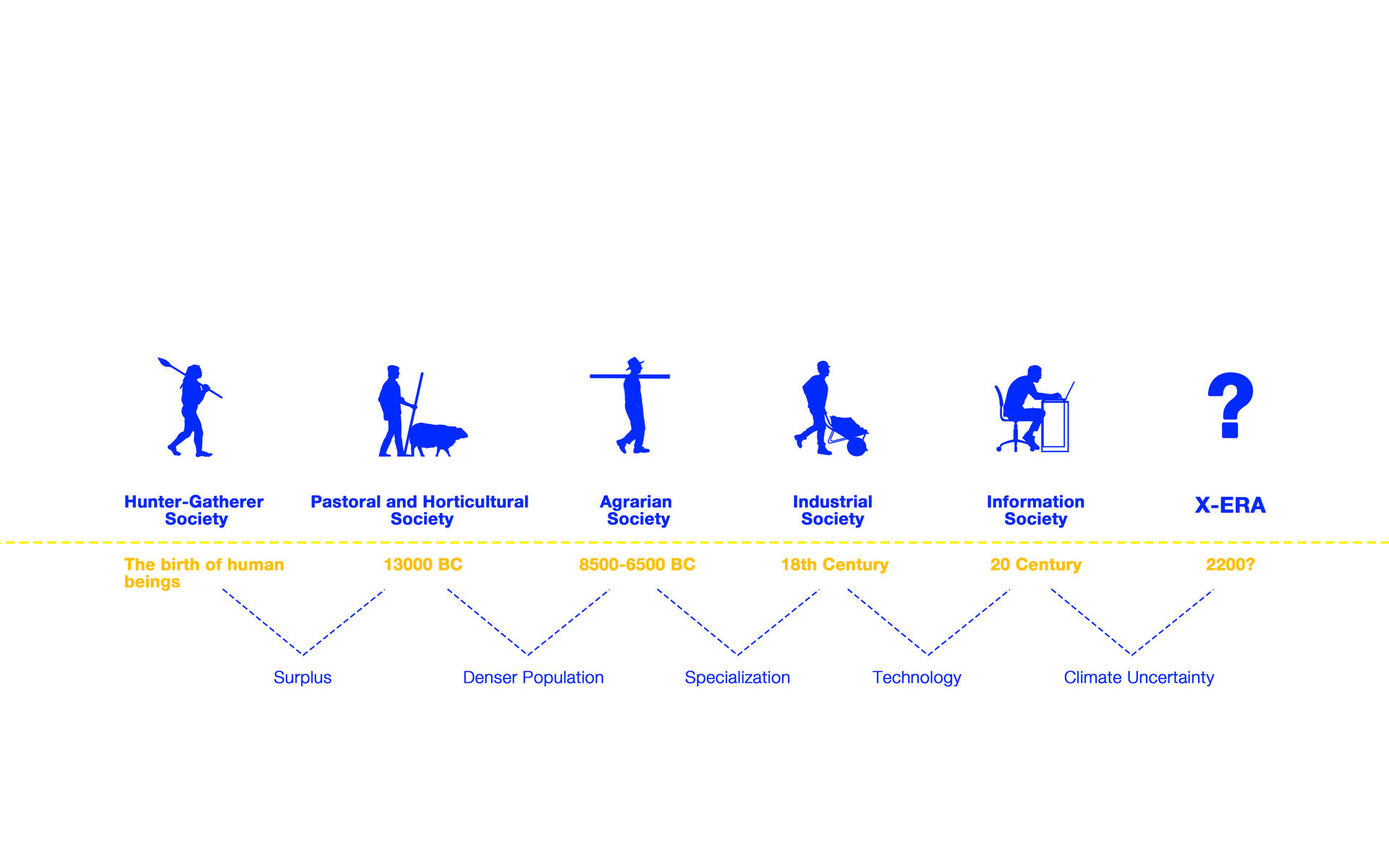
Starting from the first month of 2200, or the first month of X-Era, rolling sands, flooded waters, and more extreme weather will be seen at a higher frequency with more uncertainty. X era, the next society, will be the time when humans learn to adapt to changes.
The Traditional Sustainable Strategies from Indigenous Communities
The past is the key to the future. In contrast to the contemporary societies that are selfishly exploiting the common resource without limits exacerbated by a sedentary lifestyle and still infrastructures, the communities from the traditional societies have been respecting and protecting nature collectively for such a long time with nomadic lifestyles and mobile practices. The research phase of the thesis mainly learned from the sustainable strategies of indigenous peoples living in two areas: the Imuhar in the arid Sahara desert, and Tikuna, Cocama, and Yagua in the wet Amazon Rainforest.
However, not everyone values the indigenous people's ancestral practices and traditional knowledge. Despite the ecological benefits of sustainable lifestyles, many governments even discriminatively restrict people’s access to land, natural resources, and self-determination. In the context of climate change and human societies' evolution, it is important that we recognize, document, and learn from the orally transmitted indigenous knowledge which infers us on how to survive in the unknown changes spanning terrestrial and aquatic ecosystems of the globe.
Image
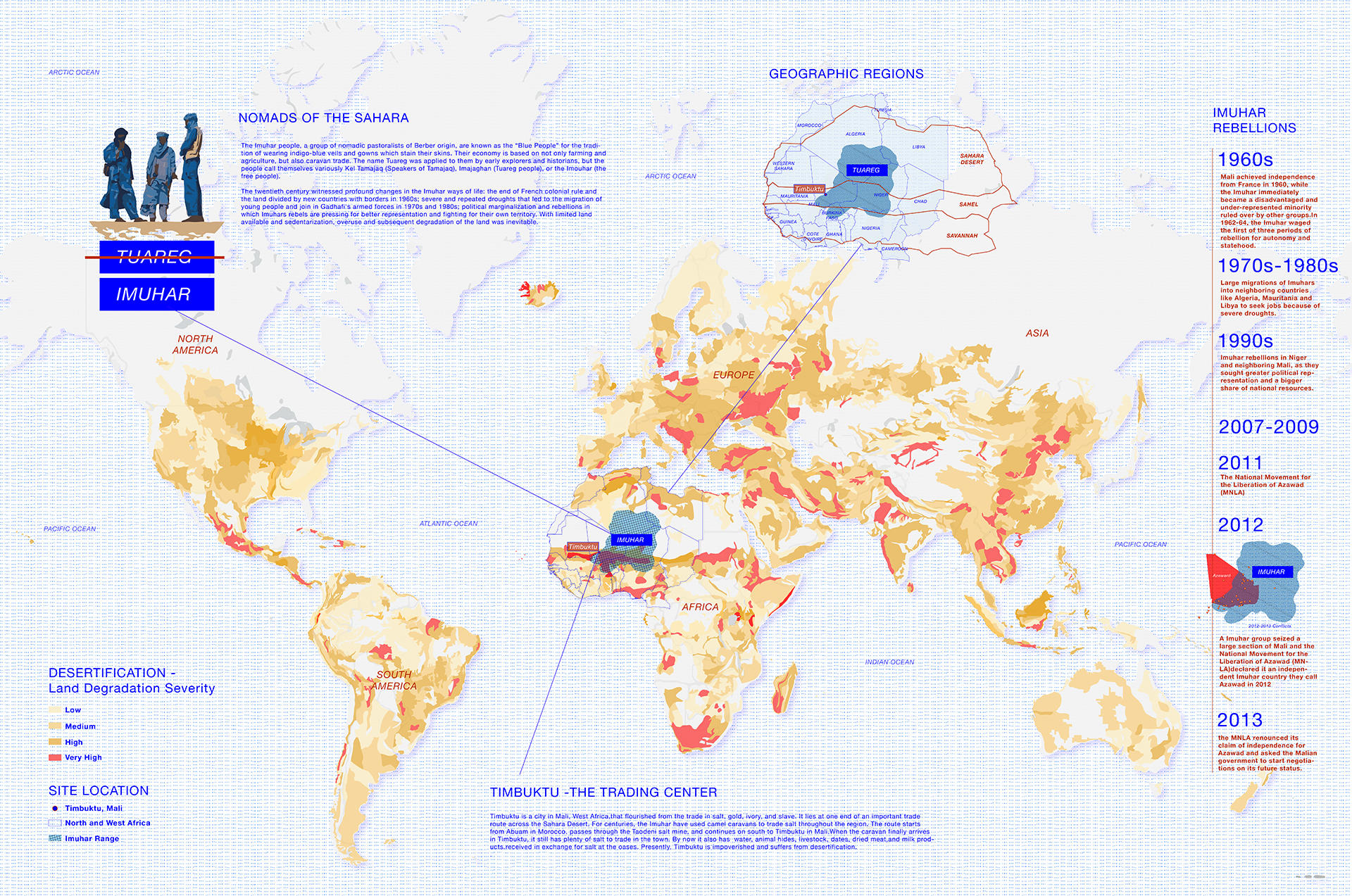
The Imuhar People are a group of pastoral nomads of Berber origin, known as the “Tuareg People” and “Blue People” for the tradition of wearing indigo-blue veils and gowns that stain their skins. For almost two thousand years, the Imuhar pastoral nomads have lived a self-sufficient life in the extremely dry (arid) area in the Sahelian and Saharan region. They practice nomadic pastoralism by traveling to different places during the year in search of pastures and drinking water for their herds. Work tools for cultivation activities include pickaxes and hoes made locally, imported containers such as buckets and watering cans, and goatskins for transporting water.
The Adaptive Preparation for X-ERA(2200)
After learning from indigenous peoples living in extremely arid and wet areas, this thesis speculates an adaptive possibility for the upcoming X-Era to respond to flood and drought conditions. Seasonal route systems, shifting responsibilities, seasonal infrastructures, micro-macro calendar, and seasonal law and property are the key ideas inspired by and transformed from indigenous sustainable knowledge.
To reflect on the process of preparing for the X-Era as a landscape architecture student, I learned to respect culture by not interrupting when you are not invited. I learned to respect nature by understanding the meaning of adaptation. I have become more aware of the importance of archiving, comparing, and sharing knowledge than before. I realized that design could be a simple adaptive strategy rather than leaving erasable marks on the earth. I always see my limitations which encourages my curiosity to learn more. Last but not least, never be afraid to imagine.
Image
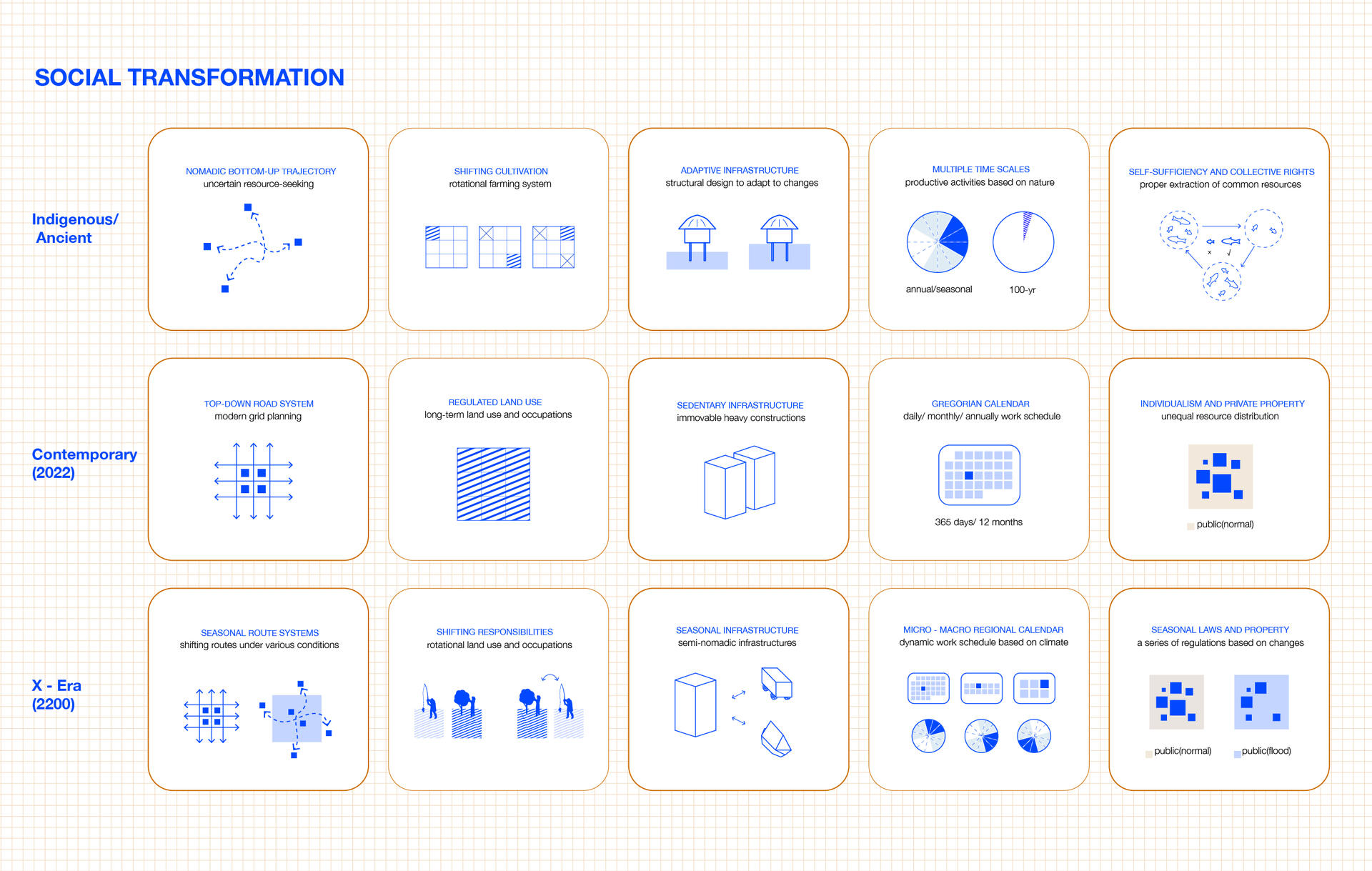
The lifestyle of X-Era is an attempt to adapt to the extreme weather with indigenous wisdom, building upon contemporary society. The transformative strategies in the X-era will be mobile, self-sufficient, seasonal, and collective so that human society can quickly adapt to the uncertainty.
The Indigenous Wisdom and Adaptation in X-Era(2200)
- Architecture
- Ceramics
- Design Engineering
- Digital + Media
- Furniture Design
- Global Arts and Cultures
- Glass
- Graphic Design
- Industrial Design
- Interior Architecture
- Jewelry + Metalsmithing
- Landscape Architecture
- Nature-Culture-Sustainability Studies
- Painting
- Photography
- Printmaking
- Sculpture
- TLAD
- Textiles

